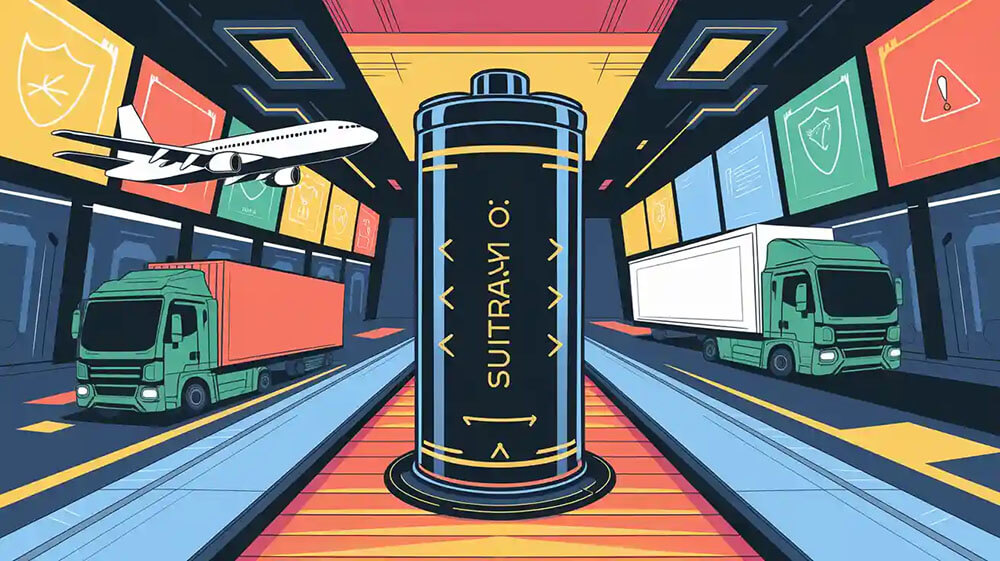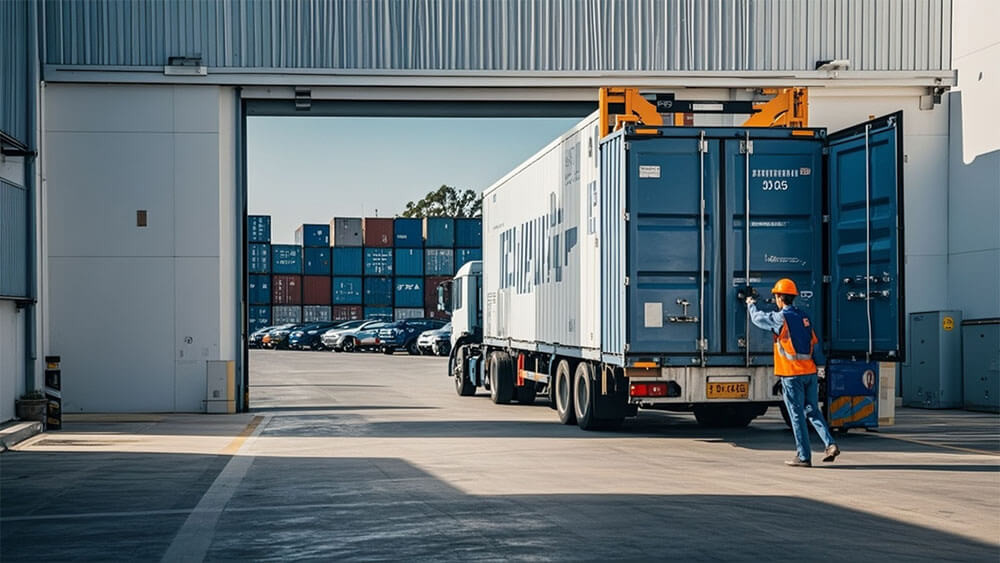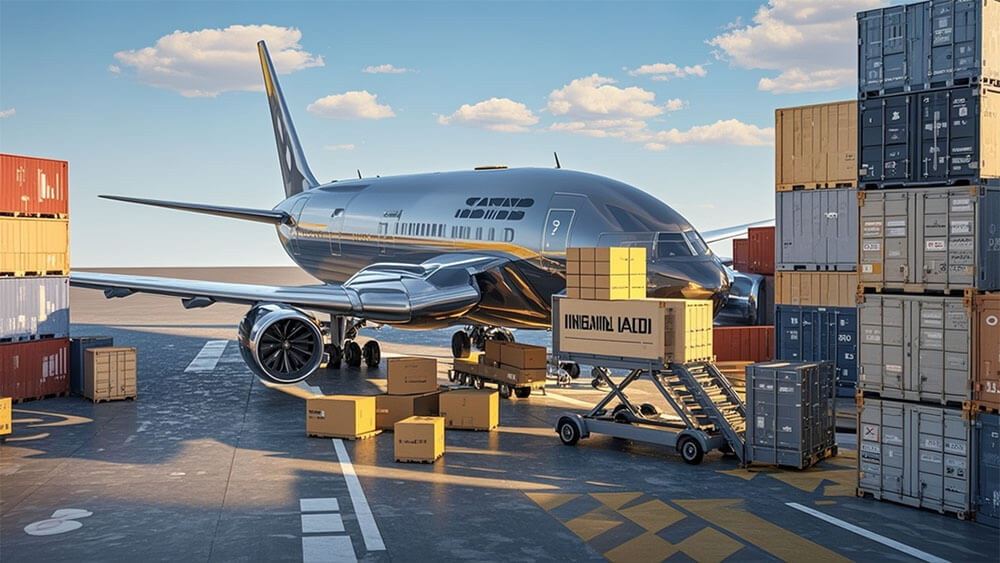
Transporting lithium batteries safely has become a global priority. You must understand the regulations governing this process in 2025 to prevent risks and ensure compliance. Over 40 air transport incidents involving lithium batteries have occurred since 1991, with 21 on passenger aircraft. These incidents often result from overheating or damage, underscoring the need for strict guidelines. The United Nations Standard 38.3 plays a vital role in ensuring safety during lithium battery transportation. This guide will help you navigate these essential regulations effectively.
Key Takeaways
- Learn why UN 38.3 testing is important for lithium batteries. Following the rules keeps transport safe and avoids delays.
- Always pack lithium batteries as per IATA and DOT regulations. Good packing lowers risks and follows safety rules.
- Keep correct paperwork for all lithium battery shipments. This avoids fines and keeps things running smoothly.

Part 1: Overview of Lithium Battery Transportation
1.1 Overall Control of Lithium Battery Transportation
Effective control of lithium battery transportation is essential to ensure safety and compliance with global shipping regulations. Lithium batteries are classified as Class 9 hazardous materials under the Hazardous Materials Regulations (HMR). This classification highlights the potential risks associated with their transport, such as overheating or short circuits. To mitigate these risks, you must adhere to strict guidelines and safety standards.
Key control measures include mandatory testing, proper packaging, and adherence to international transport regulations. For instance, batteries must undergo rigorous tests such as altitude simulation, thermal, vibration, and shock tests to ensure they can withstand various conditions during transit. Additionally, packaging must meet UN standards and include hazard labels to communicate potential risks effectively. Small and medium-sized batteries may qualify for specific exceptions, but you should always verify the applicable requirements.
The oversight of lithium battery transportation involves multiple organizations, including the DOT, PHMSA, IMO, and the EU. Each entity enforces specific guidelines to ensure safe and compliant battery shipping. Whether you are shipping by air, sea, or road, partnering with experienced logistics providers can help you navigate these complex regulations and avoid penalties.
Tip: Always declare lithium batteries accurately and maintain proper documentation to ensure compliance with DOT regulations and international standards.
1.2 UN 38.3 Certification and Testing Standards Explained
Definition and Scope of UN 38.3 Certification
UN 38.3 refers to Section 38.3, Part III of the United Nations Manual of Tests and Criteria for the Transport of Dangerous Goods | 403. It is a mandatory testing standard for lithium battery transportation safety, requiring lithium batteries to pass 8 safety tests to ensure they do not pose hazards during transport due to environmental changes.
Applicable Products:
- Lithium secondary batteries (e.g., medical device batteries, security camera batteries, consumer electronic batteries).
- Sodium-ion batteries, lithium primary batteries (e.g., lithium coin cells).
- Exclusions: Lead-acid batteries, nickel-metal hydride (NiMH) batteries, and other non-lithium-based batteries.
Core Test Items and Criteria
UN 38.3 includes the following 8 tests, all of which must be passed for certification:
- Altitude Simulation Test: Expose batteries to ≤11.6 kPa pressure for 6 hours; no leakage, fire, or explosion.
- Thermal Test: Temperature cycling (-40°C to 72°C) with 10 cycles over ≥1 week.
- Vibration Test: 12 vibrations in three axes (7Hz–200Hz, 8gn acceleration).
- Shock Test: 18 half-sine shocks (150g/6ms or 50g/11ms).
- External Short-Circuit Test: Short-circuit at 57°C ± 4°C until thermal stability, followed by 1-hour monitoring; surface temperature ≤170°C.
- Crush Test: Impact battery with a 9.1kg weight from 61cm height; monitor temperature changes.
- Overcharge Test: Charge at 2x maximum voltage/current for 24 hours.
- Forced Discharge Test: Discharge using a 12V series power supply.
Pass Criteria: No disassembly, fire, or leakage of toxic/corrosive substances during testing.
Note: Non-compliance with UN 38.3 can result in shipment delays, fines, or even bans on future battery transport. Always prioritize safety and compliance to protect your business and customers.

Part 2: Transportation Modes and Guidelines
2.1 Air Transport: IATA Guidelines and Restrictions
Core Framework of IATA Standards
The International Air Transport Association (IATA) governs air transport safety through two primary regulations: the Dangerous Goods Regulations (DGR) and the Live Animals Regulations (LAR). The DGR serves as the global benchmark for transporting hazardous materials, including lithium batteries, by air.
Scope:
- Applies to all air-transported dangerous goods (e.g., lithium batteries, chemicals, compressed gases).
- Regulates roles such as shippers, carriers, freight forwarders, and ground handlers.
IATA Standards for Lithium Battery Shipping
Lithium batteries, classified as Class 9 hazardous materials, must comply with the following critical rules:
Classification and Packaging Requirements
- Lithium-ion batteries (rechargeable):UN numbers: UN3480 (battery alone) or UN3481 (packed with equipment).Packaging Instructions (PI): PI 965 (loose batteries) or PI 966/967 (with equipment).
- Lithium-metal batteries (non-rechargeable):UN numbers: UN3090 (battery alone) or UN3091 (packed with equipment).Packaging Instructions (PI): PI 968 (loose batteries) or PI 969/970 (with equipment).
- Sodium-ion batteries (new in 2025):UN number: Pending finalization (currently labeled as UNXXXX).Requires UN38.3 test reports and packaging compliant with UN standards (details to be updated).
Key Restrictions:
- Capacity limits: Lithium-ion cells ≤ 20Wh; lithium-metal cells ≤ 1g lithium content.
- State of Charge (SOC): Must be ≤ 30% during transport.
Key Updates in the 2025 IATA DGR 66th Edition
- Sodium battery regulations:Sodium-ion batteries must pass UN38.3 tests and follow new classification and packaging guidelines.
- Electric vehicle (EV) battery requirements:EV batteries require additional thermal runaway prevention documentation.
- Streamlined packaging processes:Permits pre-qualified standardized packaging to reduce testing timelines.
- Mandatory electronic documentation:All hazardous goods documents must be submitted electronically (e.g., XML format) starting January 2025.
2.2 Sea Transport: IMDG Code Compliance
The International Maritime Dangerous Goods (IMDG) Code is the global standard for the safe transportation of dangerous goods by sea. Managed by the International Maritime Organization (IMO), it is mandatory for all SOLAS (Safety of Life at Sea) signatory nations where the Maritime Safety Administration enforces compliance. Below is a detailed overview of IMDG Code compliance for sea transport:
Scope and Legal Framework
Purpose: The IMDG Code ensures the safe transport of hazardous materials, protects marine environments, and facilitates international trade.
Applicability:
- Covers all dangerous goods transported by sea, including chemicals, explosives, gases, and lithium/sodium batteries.
- Applies to manufacturers, shippers, freight forwarders, and port operators involved in packaging, labeling, or handling hazardous cargo.
- Legal Basis: Aligns with the SOLAS Convention (safety) and MARPOL Convention (pollution prevention).
Core Compliance Requirements
- Classification and Identification:
- Goods must be classified into 9 hazard classes (e.g., explosives, flammable liquids) and assigned a UN number (e.g., UN3480 for lithium-ion batteries).
- Sodium-ion batteries, newly regulated in 2025, require UN38.3 testing and specific packaging guidelines.
- Packaging and Labeling:
- Use IMO-certified packaging (e.g., UN-approved containers) with proper cushioning and sealing to prevent leaks.
- Labels must include:Hazard class labels (e.g., Class 9 for lithium batteries).
2025–2026 Updates
- IMDG Code 42-24:Effective Date: Recommended from January 1, 2025; mandatory from January 1, 2026.New Rules for Sodium Batteries: Requires UN38.3 testing and alignment with lithium battery standards.Electronic Documentation: Mandates XML/EDI formats for shipping documents.
2.3 Road Transport: Domestic and International Rules
Road transport regulations vary significantly between domestic and international contexts, with distinct legal frameworks and compliance requirements. Below is a structured analysis based on current standards and practices:
Domestic Road Shipping Regulations
Classification and Packaging:
- Hazard Class: Lithium batteries are categorized as Class 9 dangerous goods due to fire and explosion risks.
Packaging Requirements:
- Use UN-certified containers designed for lithium batteries, often made of non-combustible materials and equipped with safety features like smoke detectors and pressure vents.
- Ensure proper cushioning to prevent physical damage during transit.
International Road Transport Rules
- CMR Convention:Applicability: Governs cross-border road transport in Europe under the Convention on the Contract for the International Carriage of Goods by Road (CMR).Key Requirements:Use CMR consignment notes as legal proof of the transport contract.Liability limits for carriers (e.g., 8.33 SDR/kg for cargo loss/damage unless higher value is declared).
- Non-CMR Countries:In regions like Asia or Africa, transport relies on bilateral agreements or national laws. For example, China’s cross-border shipments to Central Asia often follow ad-hoc contracts.
FAQ
What are the penalties for non-compliance with lithium battery transportation regulations?
Non-compliance can result in fines, shipment delays, or bans. Always follow packaging, labeling, and documentation requirements to avoid these penalties.
Can damaged lithium batteries be transported?
No, damaged or defective lithium batteries cannot be shipped. Regulations strictly prohibit their transport to prevent safety hazards during transit.
How do you determine the correct UN number for lithium batteries?
The UN number depends on the battery type and configuration. For example, UN 3480 applies to standalone lithium-ion batteries, while UN 3481 covers batteries with equipment.




